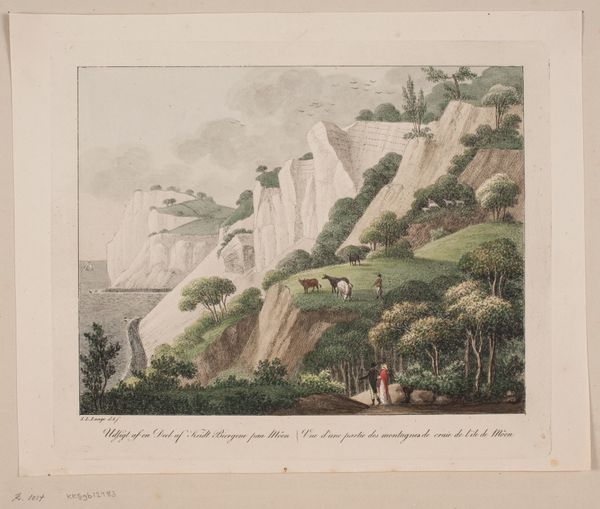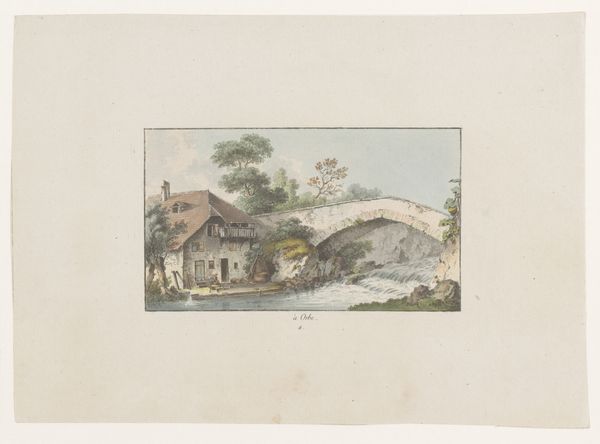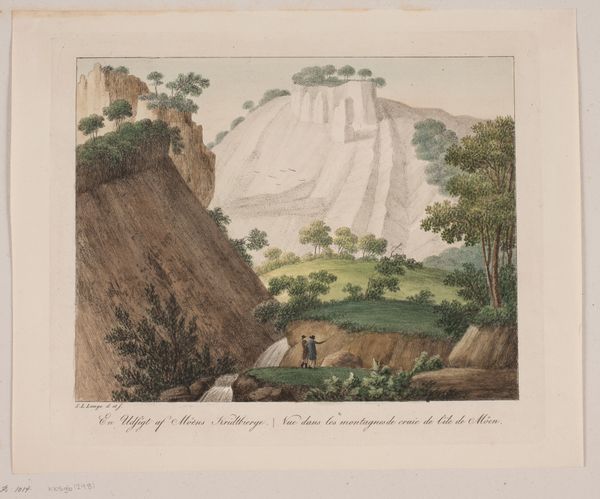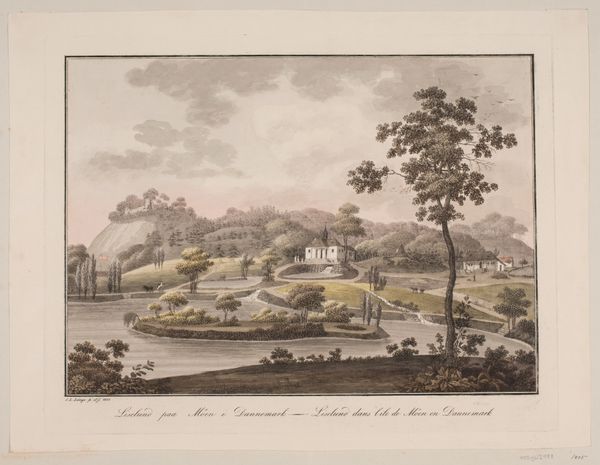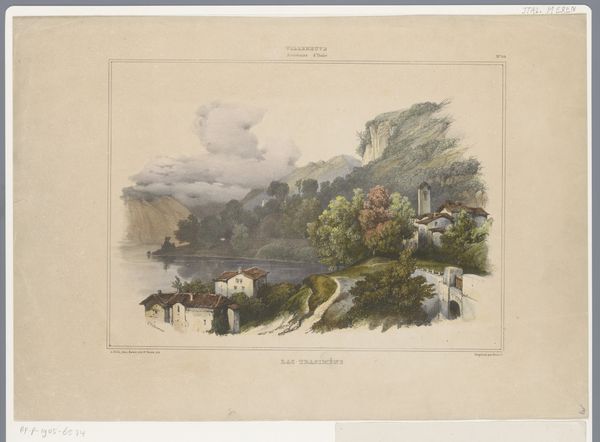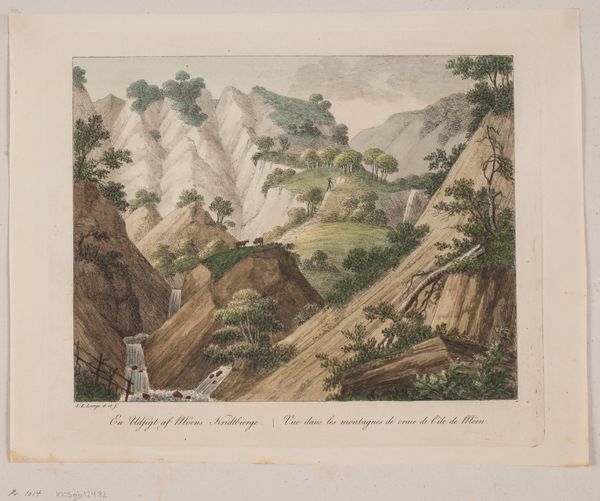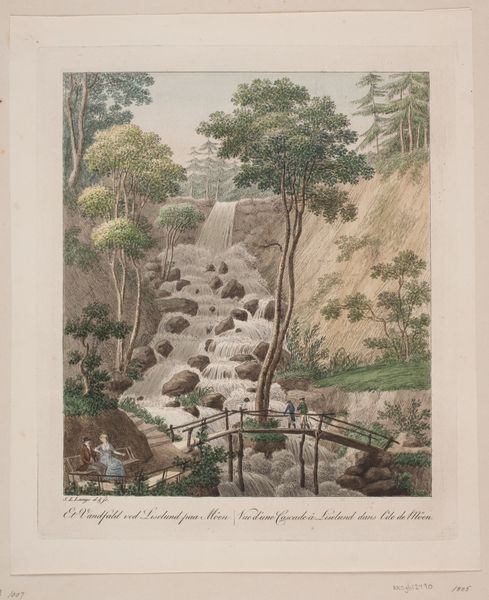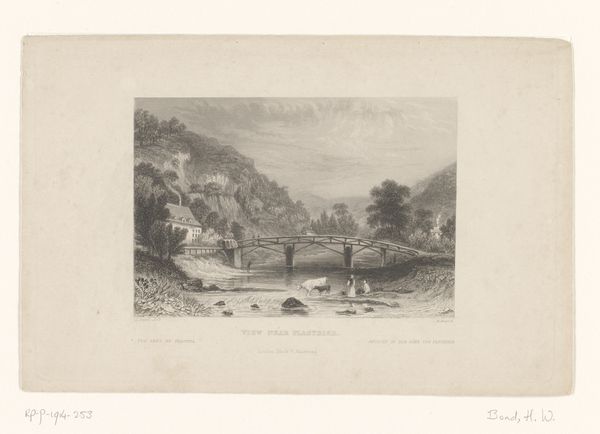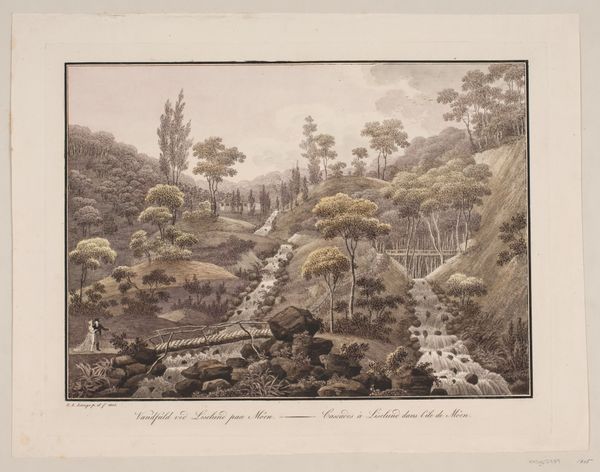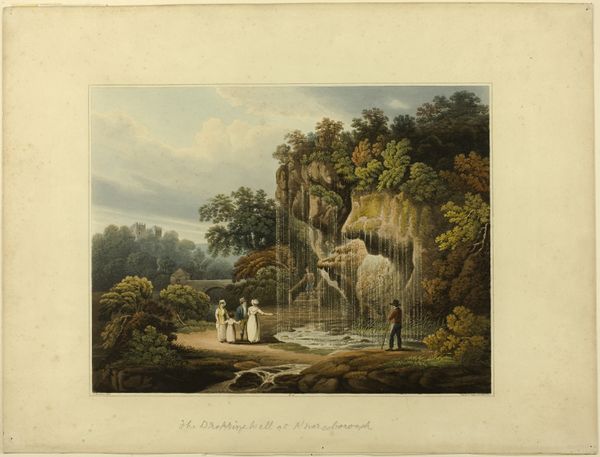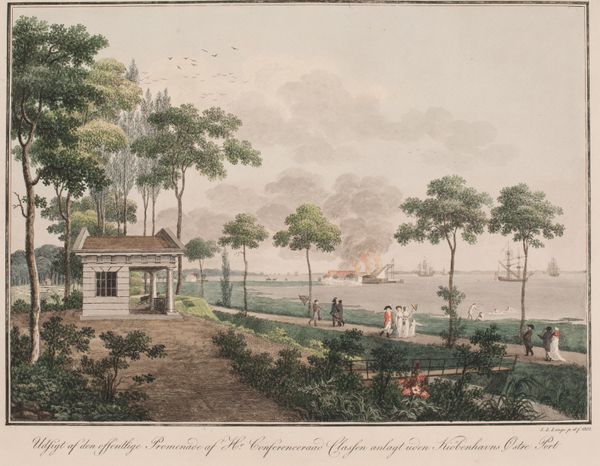
painting, print, etching, watercolor
#
water colours
#
narrative-art
#
painting
# print
#
etching
#
landscape
#
watercolor
#
romanticism
#
academic-art
#
watercolor
Dimensions: 194 mm (height) x 249 mm (width) (billedmaal), 239 mm (height) x 283 mm (width) (plademaal)
Editor: This is "Et kapel ved Liselund på Møen," or "A chapel near Liselund on Møn," created in 1805. It appears to be a print – possibly an etching with watercolor – and it depicts a small chapel nestled in a picturesque, almost idyllic landscape. The colors are quite muted and soft, giving it a tranquil feel. What can you tell me about this piece? Curator: This work gives us insight into the romanticization of nature and the emergence of national identity in early 19th-century Denmark. Picturesque landscapes became a vehicle for exploring cultural values. Do you notice how the chapel isn't just a religious structure, but integrated harmoniously with the landscape, reflecting a new cultural understanding? Editor: I do! It feels very deliberate – like the chapel is meant to be a part of, not separate from, the natural world. Curator: Precisely. The figures strolling with a dog add to the scene's charm, but also underscore the elite’s appropriation of the rural. Consider the social context: Liselund was a landscaped park built by a nobleman. So, is this an objective observation or a constructed vision of ideal Danish life being presented to an elite audience? Editor: That's a great point. I hadn't considered how the imagery might be shaped by the patron's social standing and ideals. So, the artwork doesn't just depict a landscape; it reflects a certain worldview and serves a specific cultural purpose. Curator: Exactly. It invites us to consider how artistic representations shape and reinforce particular socio-political narratives. Editor: Thanks, that’s given me so much to think about regarding the social forces in artistic creation. Curator: And it shows us the enduring link between art and the cultural values it portrays.
Comments
No comments
Be the first to comment and join the conversation on the ultimate creative platform.
